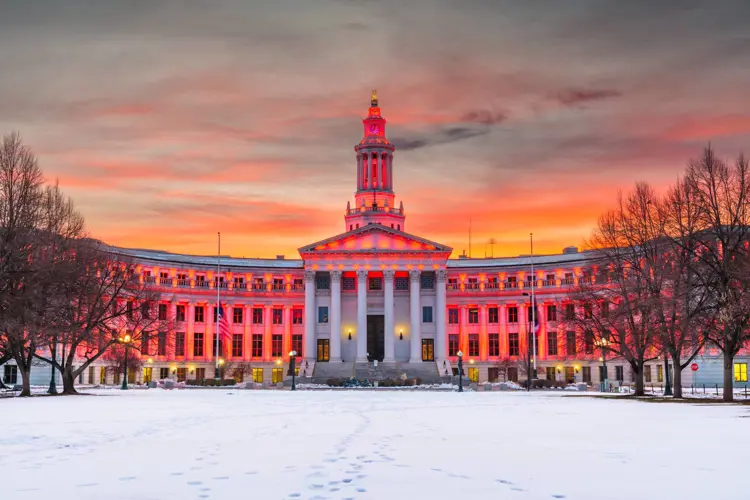Update April 10, 2024 Canada is planning to (finally) implement its flavor ban---almost three years after it was announced.
Update Aug. 24, 2021 Canadian vapers and other interested parties have until Sept. 2 to make comments on Health Canada's proposed flavor ban. There will be no further consultations or debate on the issue. For vapers, this is the final opportunity to weigh in on a ban that is likely to shut down most vape shops and make the most attractive products unavailable. If the proposed flavor rules take effect, it's unlikely they'll be changed except by amending the law that gives Health Canada regulatory authority over vaping, which would be a difficult process that would probably take years, if it's possible at all. Instructions for commenting can be found in the last section of this article.
June 21, 2021
The Canadian government has initiated the process of banning most flavored vaping products. The flavor ban will be implemented as a regulation by Health Canada, and will prohibit flavors other than tobacco, menthol and mint.
Health Canada will also finalize a rule, proposed last December, to cap the nicotine strength of e-liquid and DIY nicotine at 20 mg/mL (or two percent). Despite opposition from vapers during the public comment period, the nicotine cap rule was completed in the promised six-month timeframe. It will be published on June 23 and take effect on July 8. Retailers will have until July 23 to clear existing stock.
The draft flavor regulations were published Saturday in the Canada Gazette, serving notice that they too will be adopted in six months (technically 180 days)—sometime in January 2022.
The agency is proposing not just a ban on flavor descriptors or “characterizing” flavors—as most flavor restrictions do—but setting out a list of allowable ingredients used to create tobacco, menthol and mint e-liquid flavorings. The agency will impose complete prohibition of all other flavorings, including all sweeteners used in e-liquid. Health Canada estimates that 80-85 percent of existing tobacco and menthol/mint e-liquids will have to be reformulated.
The rules will “prescribe sensory attributes standards to prevent a sensory perception other than one that is typical of tobacco or mint/menthol.” In other words, there will be no sneaking vanilla or caramel into the tobacco flavors, or berries into the menthol.
When Canada amended its Tobacco Act in 2018 to become the Tobacco and Vaping Products Act, Parliament gave Health Canada the ability to create product standards, such as limiting nicotine content or available flavors. Health Canada has also mandated child-resistant refillable tanks and imposed advertising restrictions.
Why is Health Canada banning vape flavors?
The flavor ban is being presented as a tactic to reduce youth vaping, without any evidence to indicate that it can accomplish that goal. Health Canada says the currently available flavor variety is “believed to have contributed to the rise in youth vaping.” Prohibiting flavors, according to the agency, is “expected to contribute to making these products less appealing to youth, which would help address the rapid rise in youth vaping.”
But most teenagers who vape are not committed to vaping. Rather, they're occasional experimenters for whom curiosity, not flavor options, is the driving factor. If they can’t get the flavor they prefer (if they prefer one at all), they will use a different flavor—or experiment with cigarettes instead, as a recent Yale study showed.
Conversely, flavors are crucial for exclusive vapers—regular users who no longer smoke. Surveys of vapers show that fruit and dessert flavors are by far the most popular, especially among users who have quit smoking entirely.
Two 2018 studies of American vapers’ flavor preferences—one led by Christopher Russell, and one by Konstantinos Farsalinos—showed that four times as many adult vapers favored fruit or dessert flavors over tobacco flavors. More than three times as many preferred candy flavors to tobacco. Health Canada even admits the importance of flavors to this group.
“Measures to limit flavours in vaping products to reduce their appeal to youth may also make these products less attractive to people who either vape as an alternative to cigarettes or to stay abstinent from smoking,” says the proposed rule. “Adults who successfully quit smoking with vaping products often cite flavours as important in breaking the link with smoking. Fruit flavours are the preferred choice for adults and youth….A recent study conducted in both Canada and the United States shows that a variety of non-tobacco flavours, especially fruit, are popular among adults who vape, particularly among those who have quit smoking and are now exclusively vaping.”
The explosion of non-tobacco vape flavors in the early part of the last decade was the result of vapers seeking more effective products to help them avoid cigarettes. Flavors were a user innovation, as University of Waterloo (Ontario) PhD candidate Amelia Howard explained in 2019.
“Flavors reflect the preferences of the people who use these products to stop smoking,” wrote Howard. “E-cigarettes don’t work when people don’t like them, and flavors are what the people who need e-cigarettes like about them.”
“Health Canada acknowledges that cigarette smoking kills 48,000 Canadians a year and that vaping is far less hazardous,” University of Ottawa law professor and tobacco control expert David Sweanor said. “But then actively engages in measures that will kill the legal vaping market and thus many more Canadians who will continue smoking. It is time to reject abstinence-only agendas and embrace basic public health principles.”
Health Canada understands that flavors are important to the people who have broken their dependence on cigarettes. The agency even admits it has no idea what former smokers who now vape will do when flavors are removed from the market, noting that “it is unknown what the impact would be on people who vape if they had no access to their preferred vaping product flavour.”
It is known in Nova Scotia. That Canadian province banned flavored vapes in early 2020. Six months later, retailers reported a 21 percent increase in cigarette sales. A poll in the province showed that 29 percent of vapers were at risk for relapsing to cigarettes.
But Health Canada is willing to gamble with former smokers’ lives—for the kids, of course. The agency admits that reducing the variety of vape flavors will lead some vapers back to smoking and prevent some smokers from switching. But the regulators don’t seem to care that much.
Buried deep in the cost analysis of the proposal is an acknowledgement that some people who smoke will continue, rather than switching to the less-attractive flavors that will be allowed. But, says Health Canada, the good news is that tobacco companies will sell cigarettes to those people, “hence offsetting the loss of sales of tobacco- and mint/menthol-flavoured vaping products.”
Will vape shops survive without flavored products?
Vape shops and online retailers will not survive a flavor ban—especially in combination with the nicotine limit that takes effect in July. While closed-system pod-based products—probably souped up to deliver more vapor from the mandated lower-nicotine content—will remain popular, vape shops need a wide variety of e-liquid flavors to prosper. No one is making a special trip to a vape shop to choose between 20 tobacco, menthol and mint e-liquids.
Some may convert to black market operations, selling illegal liquids without fanfare. Others will probably join their cousins in American states with flavor bans, trying various hybrid business models to get by. Many will simply close.
The rule allows manufacture of flavored products for export. Some large Canadian e-liquid producers may have enough foreign business to successfully limit their domestic business to the allowed flavors. Juul Labs and the tobacco companies will carry on with tobacco, menthol and mint. Mint is a popular JUUL flavor anyway.
Health Canada will accept comments on the proposed rule, although the primary public consultation on vaping regulations was published and completed in 2019. Of the 24,000 comments received in response to questions about potential vaping rules, 23,000 were preprinted postcards organized by vape shops, which were largely ignored by the regulators. Few vapers took the time to compose serious comments.
Comments to Health Canada are due by Sept. 2
Comments to Health Canada must be received by Sept. 2. There will be no further opportunities to object to these rules.
The Vaping Industry Trade Association of Canada (VITA) has created a website that offers vapers two options for responding to Health Canada: sending their own comments, or sending a letter crafted by the trade group. Vape shop owner Thomas Kirsop strongly advises consumers to send a personal response, including the story about how vaping flavored products helped you.
By personalizing the response, Health Canada reviewers are forced to count each response individually, rather than lumping them as "one unique response." They're also reminded with each story that their regulations will hurt real people.
You can also respond directly to Health Canada by mail or email:
Tobacco Products Regulatory Office
Tobacco Control Directorate
Controlled Substances and Cannabis Branch
Health Canada
150 Tunney’s Pasture Driveway
Ottawa, Ontario K1A 0K9
Or email: hc.pregs.sc@canada.ca
The Freemax REXA PRO and REXA SMART are highly advanced pod vapes, offering seemingly endless features, beautiful touchscreens, and new DUOMAX pods.
The OXVA XLIM Pro 2 DNA is powered by a custom-made Evolv DNA chipset, offering a Replay function and dry hit protection. Read our review to find out more.
The SKE Bar is a 2 mL replaceable pod vape with a 500 mAh battery, a 1.2-ohm mesh coil, and 35 flavors to choose from in 2% nicotine.
Because of declining cigarette sales, state governments in the U.S. and countries around the world are looking to vapor products as a new source of tax revenue.
The legal age to buy e-cigarettes and other vaping products varies around the world. The United States recently changed the legal minimum sales age to 21.
A list of vaping product flavor bans and online sales bans in the United States, and sales and possession bans in other countries.


















